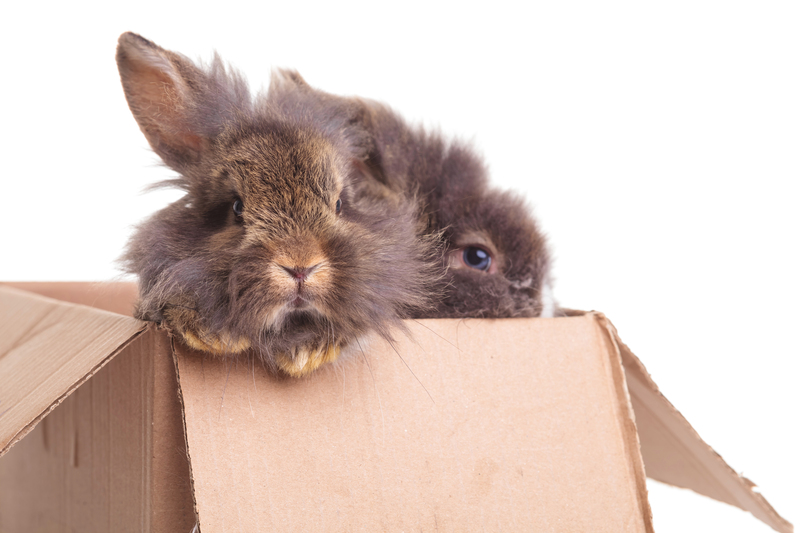The Ultimate Packing Guide for a Hassle-Free Move
Posted on 30/05/2025
The Ultimate Packing Guide for a Hassle-Free Move
Moving to a new home or office can be an exciting adventure, but packing can quickly turn into an overwhelming and stressful task. That's why having an ultimate packing guide is essential for a smooth and hassle-free moving experience. In this in-depth article, we share the best tips, tricks, and hacks to help you organize, pack, and move effortlessly--whether you're crossing town or relocating across the country!
Why Is Packing Properly So Important?
Poor packing is often the leading cause of hiccups during a move. Lost items, broken valuables, and last-minute panic can all be avoided with efficient preparation. Proper packing not only safeguards your belongings but also saves you time and money. A stress-free move starts with a strategic packing plan, ensuring everything arrives safely at your new destination.

Essential Packing Supplies for a Smooth Move
Every successful move starts with gathering the right materials. Here are the must-have supplies for hassle-free moving:
- Sturdy moving boxes (variety of sizes)
- Packing tape (heavy-duty recommended)
- Bubble wrap and packing paper for delicate items
- Marker pens (for labeling boxes)
- Scissors and box cutters
- Furniture blankets or pads
- Ziplock bags (for screws, small hardware, cables, etc.)
- Stretch wrap for bundling items
- Labels or color-coded stickers
- Plastic bins for valuables and fragile items
The Step-by-Step Packing Strategy for an Easy Move
1. Start Early and Create a Timeline
Packing is not a last-minute job. Begin planning at least four weeks before moving day. Break down your packing schedule room by room and allocate specific dates for each task. Creating a custom moving checklist will keep you on track, ensuring you don't forget anything crucial.
- 4 weeks out: Start collecting packing supplies and sorting belongings.
- 3 weeks out: Begin packing non-essential rooms (attic, basement, garage).
- 2 weeks out: Tackle living spaces, bedrooms, books, and decor items.
- 1 week out: Finish packing kitchen, clothes, and daily-use items.
- Moving day: Pack essentials bag and dismantle large furniture.
2. Declutter Before You Pack
Don't waste time or energy on items you no longer need. Decluttering is key for a hassle-free move. Before you pack, sort everything into four categories:
- Keep
- Donate
- Sell
- Dispose
Have a garage sale or donate gently used items to local charities. Decluttering minimizes the volume of items to be moved, saving on packing time and moving costs.
3. Organize by Category, Not Just Room
While it's natural to pack by room, grouping similar items together--such as books, electronics, or linens--simplifies unpacking and reduces confusion. Label each box with the category, contents, and destination room for ultimate clarity.
4. Label Everything Clearly
Investing a few extra minutes in labeling boxes can save hours of frustration. Use permanent markers or color-coded stickers to specify:
- Room destination
- Brief content description
- Fragile or heavy items
For a truly organized move, create a master inventory list of box numbers and their contents. This will help you quickly locate anything you need during and after the move.
5. Pack Smart: Box Sizes and Weight Distribution
Avoid overpacking large boxes--this makes them difficult to lift and increases the risk of breakage. Instead, stick to these rules:
- Heavy items (books, records) = small boxes
- Light items (pillows, linens) = large boxes
- Distribute weight evenly in each box
- Fill gaps with clothing or paper to prevent shifting
_Heavier items should go on the bottom, with lighter, delicate pieces on top._
6. Protect Fragile Items
Bubble wrap, packing paper, and soft linens are your best friends. For extra security:
- Individually wrap each glass, dish, or fragile item
- Use dividers or cardboard inserts for glasses and mugs
- Stuff shoes and vases with socks or paper to maintain shape
- Double tape the bottoms of boxes containing breakables
_Label boxes as "FRAGILE" and keep them upright during the move._
7. Keep Essentials Accessible
Pack a _"first night" essentials box_ with items you'll need immediately upon arrival--such as toiletries, medications, a spare phone charger, snacks, and a change of clothes. This ensures a stress-free first night in your new place.
Specialized Packing Tips for Different Items
Packing Electronics and Cables
- Take photos of cable arrangements for easy reassembly
- Use original boxes when possible
- Securely wrap items in bubble wrap or anti-static materials
- Label cables and pack them in ziplock bags
Protecting Furniture
- Disassemble large furniture (bed frames, desks) if possible
- Keep screws and bolts in labeled ziplock bags taped to the furniture
- Wrap wood, glass, and upholstery in moving blankets or stretch wrap
- Cover corners with cardboard protectors
Packing Clothes and Shoes
- Use suitcases, duffel bags, and wardrobe boxes
- Keep clothes on hangers and cover with garbage bags or hanging garment bags
- Pack shoes in their original boxes or wrap in packing paper
- Stuff shoes with socks to maintain shape
Managing Documents and Valuables
Important papers, jewelry, and personal items should always be packed in a _secure, easily accessible bag or small box_ that moves with you, not in the moving truck. Consider using a portable safe for added peace of mind.
The Packing Order: What to Pack First and Last
Ensure a stress-free relocation by following a logical sequence for boxing up your home or business:
- Seasonal items and decor (holiday decorations, out-of-season clothes)
- Books and collectibles
- Rarely used appliances
- Kitchenware, except daily essentials
- Clothes and linen, except a week's worth of essentials
- Bathroom items, leaving daily-use toiletries until the last day
- Electronics and office items (back up data in advance)
- Furniture and large items (disassembled as late as possible)
- Essentials and valuables packed last and kept with you
Common Packing Mistakes and How to Avoid Them
- Procrastination: Start packing early to reduce last-minute chaos.
- Underestimating supplies: Have extra boxes and tape on hand to avoid running out.
- Overfilling boxes: Prevent injuries and breakage by keeping boxes manageable.
- Poor labeling: Always mark every box to speed up unpacking.
- Ignoring insurance for valuables: Get moving insurance for high-value items.
- Mixing hazardous materials with household goods: Pack chemicals and flammables separately--check moving company policies.
Eco-Friendly Packing for a Greener Move
Reduce your environmental footprint by choosing sustainable packing strategies:
- Use reusable plastic bins and containers
- Repurpose newspapers, towels, and blankets for padding
- Borrow or rent boxes from friends and local businesses
- Recycle or donate packing materials after your move
- Buy biodegradable or recyclable moving supplies
A green move is not only good for the planet; it can also save you money!
Professional Packing Services: Are They Worth It?
If you're short on time or have specialized moving needs, hiring professional packers may be your best bet for a hassle-free move. Packing experts possess the right techniques and materials for protecting fragile and valuable items. They also guarantee efficient, systematic boxing and can save you hours, if not days, of work.
- Ideal for: Large homes, corporate relocations, or moves with lots of delicate items
- Time-saving: Pros can pack an entire home in one day
- Insurance: Many companies offer coverage for items packed by their team
- Partial packing: You can choose to have pros pack just a room or specific items
Be sure to compare quotes, read reviews, and clarify services before hiring a moving company.

Unpacking Tips for a Stress-Free New Beginning
- Unpack essentials first (kitchen, bedding, personal care items)
- Set up beds, bathroom, and kitchen as a priority
- Reference your master inventory list for efficient box location
- Break down boxes and packing materials as you go to clear space
- Take your time with decor and organization--enjoy making your new place home!
Conclusion: Your Stress-Free Move Starts with Smart Packing
Moving doesn't have to be overwhelming. With the right packing strategy, supplies, and organization, you can transform your move into an efficient, positive experience. The ultimate packing guide for a hassle-free move ensures you protect your valuables, minimize stress, and settle into your new space with ease. Whether you're handling the task solo or enlisting pros, a comprehensive packing plan is your best ally for a successful relocation.
Ready to move? Begin implementing these packing tips for a hassle-free move today and look forward to a seamless transition to your next home or office!
Frequently Asked Questions: Ultimate Packing Guide for a Hassle-Free Move
-
How early should I start packing for a move?
Start preparing at least four weeks in advance, packing non-essentials first and daily-use items last. -
Can I use garbage bags for moving?
They're handy for soft items like clothes or linens, but use boxes for fragile and structured items to avoid damage. -
How can I safely move fragile items?
Wrap each item individually in bubble wrap, use dividers, and mark boxes as "fragile." -
Is it worth hiring professional packers?
Yes, especially for large homes, expensive or delicate items, or if you're short on time. -
What is the best way to label moving boxes?
Label with the contents, destination room, and a unique box number. Color-coding also simplifies sorting.
For more expert moving advice and packing hacks, bookmark this ultimate packing guide for stress-free moves and share it with anyone planning a relocation!



